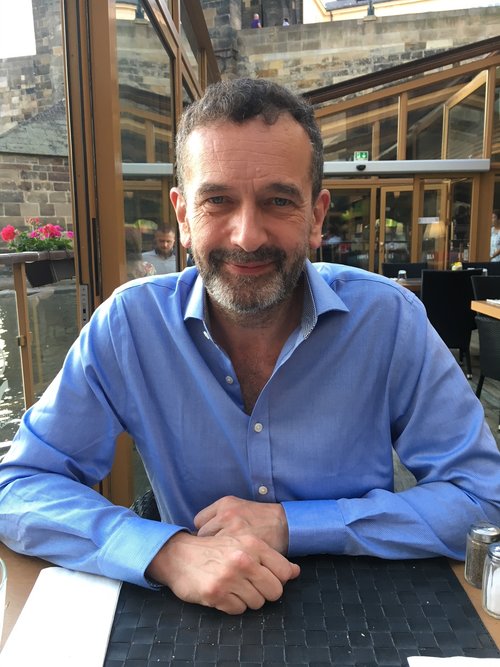Professor David Best, who led a series of recovery-focused research studies in the UK, US and Australia, shared with us more details around Life in Recovery research. This research will involve many EU countries, England, Scotland, Belgium and the Netherlands, and the RUN partnership will build on this initial partnership and build a European recovery research network.
David Best is a Professor of Criminology in the Department of Law and Criminology at Sheffield Hallam University; Associate Professor of Addiction Science in the Eastern Health Clinical School of Monash University, Melbourne and co-chair of the Sheffield Addiction Recovery Research Group. In addition to that, he is founder and co-chair of Recovery Academy Australia and the UK Recovery Academy. He is the author of five books and around 170 peer-reviewed scientific papers. In this interview, we have touched on a wide range of topics around his most inspiring research, Life in Recovery, LiR. It has been a joy to interview David and we hope you will enjoy reading about LiR.
Where does this idea come from?
The original idea comes from the US where Faces and Voices of Recovery (FAVOR) commissioned a well-known recovery researcher, Alexandre Laudet to design an online survey that was completed by more than 3000 people across the US. The findings were sufficiently powerful and innovative that the survey has subsequently been undertaken in Australia, the UK, South Africa and Canada.
Where has the LiR survey been done and what has been found?
The survey basically takes the form of assessing how life was at the peak of addiction and how it is in recovery. Basically, the survey shows marked and consistent improvements in the areas of family functioning, health and wellbeing, employment, reductions in crime and offending. In all areas, there were clear improvements, with longer periods in recovery associated with greater levels of improvement.
What are the current activities around Life In Recovery?
Because of the flurry of international activities, we are currently preparing a special issue of the academic journal, Alcoholism Treatment Quarterly, dedicated to the findings of the surveys to date and the international comparisons between sites. We are also writing up a family version of the Life in Recovery survey that was carried out in the UK and US with more than 1,500 completed forms, and we are piloting a similar survey for gambling. Finally, we are launching a second wave of Life in Recovery as part of a European research programme on pathways to recovery. This will start in January and will involve England, Scotland, Belgium and the Netherlands, and the RUN partnership will build on this initial partnership and build a European recovery research network.
What are the benefits of taking part?
From the first survey, it was obvious that people took pride in telling the story of their recovery transformation and being a part of community of recovery. Additionally, each survey has been of huge benefit to the recovery community building an evidence base that recovery changes lives and that recovery can and has been achieved by large numbers of people. The reports have not only generated interest from the mass media they have also provided a strong steer to policy makers whose decisions about recovery inclusion in policy have been influenced as a result.
Are there differences between countries?
Yes there are. However, it is important to note that the differences should be interpreted within an overall picture of clear and consistent similarities across the participating countries. For instance, around half of all the respondents in each participating country have been women and in all countries there is a strong relationship between length of time in recovery and the extent of change. Nonetheless, there are clear differences both in terms of the characteristics of those completing the survey and in the specific domains of improvement. This becomes more and more useful the more countries complete the survey as it means there are growing ‘norms’ for recovery across nations that each new country can compare and contrast with. This allows the researchers and policy makers to have a sense of what works and what the barriers are to recovery that need to be addressed.
How can the survey be adapted to local needs?
The way the survey has been designed, there are a core set of questions that should not be changed or adapted to allow comparison across sites and so that each new country can add to the international database mapping recovery models or pathways. However, beyond that, the survey provides an opportunity to add questions or sections that address local needs. This has been done in each of the countries that have participated so far, where areas of local concern and of particular research or policy interest can be added. Additionally, obviously the demographic questions may be amended to reflect for example the ethnic mix in that particular country. The one warning is not to make the questionnaire too long, as this will reduce the number of people that will complete the whole thing.
What are the costs?
This is the beauty of Life In Recovery if it is done totally online. The only costs are around translation into the right range of languages, the license for Survey Monkey or Qualtrics as the platform for hosting the survey, and the costs of writing up the results. This is the cheapest and easiest research to do. For instance, in Australia, we did the whole thing for $AUD5,000.
What are the broader implications for international recovery research?
There is still relatively little published recovery research and each new piece of research is incredibly valuable in its own right. However, there are two big secondary benefits – the first is to add to the international picture about pathways to recovery and the profile of people who do recover and to keep the momentum going; the second is that each team is a potential partner for further international recovery research and adds to the credible body of recovery researchers.
When can we expect final analysis of the findings?
In April 2018.
By Mulka Nisic


